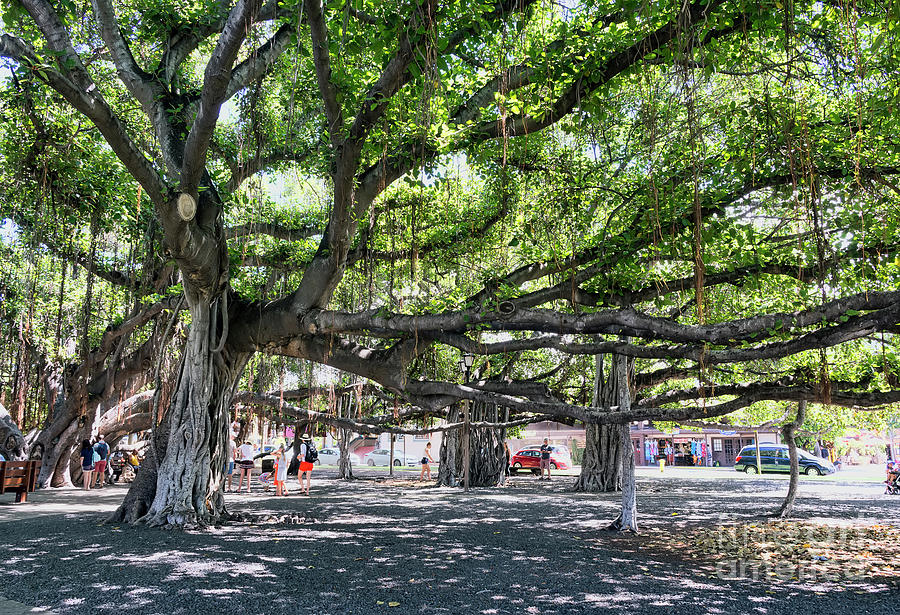
Banyan Tree

by Eddie Yerkish
Title
Banyan Tree
Artist
Eddie Yerkish
Medium
Photograph - Photograph
Description
This photo of a banyan tree was taken on Maui, Hawaii. This tree is located close to the port in the historical Lahaina town, which was the former capital of Hawaii. It is the oldest banyan tree in Hawaii.
The banyan tree, received as a gift in the 1870s, was planted on April 24, 1873, by William Owen Smith, the then sheriff of Lahaina. The tree was planted to mark the 50th anniversary of the arrival of the first Protestant mission in Maui.
The banyan tree or Ficus benghalensis is from India, and it is known for unusual growth of its roots. The roots descend or sprout from the branches into aerial roots towards the ground where they form new trunks. This results in growth of many trunks around the main trunk. The banyan, native to India, is one of 60 types (out of reported 1,000 species in the world) of fig trees found throughout Hawaii. The trees are tall and “grow into mazes of additional trunks” and in Lahiana, the tree covers an area of over half an acre. The banyan tree in Lahaina, when planted, was a sapling of 8 feet in height. Over the years, it has grown to a height of over 60 feet and spread into 16 major trunks, apart from the main trunk forming a large canopy of providing shade to the people from the blazing sun of Lahaina; it was intended as a part of park. The growth of the roots was facilitated by the local Japanese gardening community by hanging lanterns filled with water at suitable aerial roots. It is said to be the largest tree in Hawaii and in the United States. It has a circumference of about one fourth of a mile, and about a thousand people could congregate under it. A sight to watch at dusk time is the congregation of birds such as common myna birds (Acridotheres tristis) which roost in the branches of the tree for the night causing a cacophony of bird cries. The name "banyan" is derived from the Hindu word traders (banyans) who traded their products under the canopy of these trees.
There used to be a canal of water down one side of the tree and even though the canal is now a street it is thought to be a source of water for the tree roots. (Source: Wikipedia)
Uploaded
August 14th, 2017
Embed
Share












































